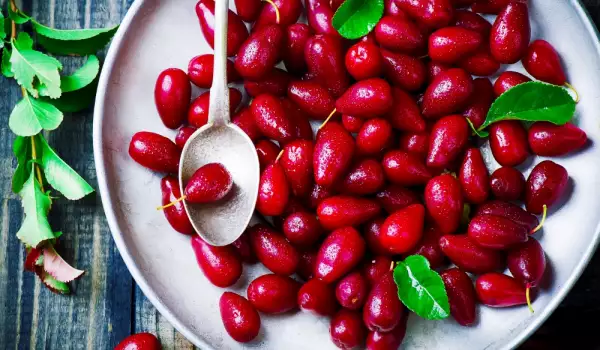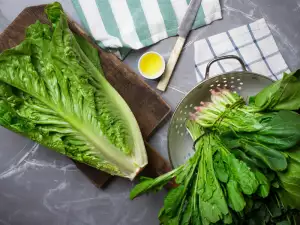Dogwood is a symbol of health, longevity, fertility. What are Christmas and New Year's pies without the decoration of short dogwood sprigs with buds attached to them?
The economic importance of the common dogwood as a stone fruit species has not been lost and is even increasing. The reason for this is the adaptability of the species, the variety of varieties and above all because of the nutritional and medicinal properties of the dogwood fruit. The small fruit, while still green, were pickled and eaten like olives in ancient Greece and Rome and weapons made from dogwood were once woven with silver threads. According to legend, the Trojan Horse was made of dogwood. It is no accident that Virgil has included dogwood in poetry.
Even today the fruits of the dogwood - dogwoods - are a known remedy for stomach complaints, so it is good to introduce this cultivated plant.
General information about dogwood
The common dogwood has the Latin name Cornus mas and is a low tree or shrub from the Dogwood family. About 40 species of dogwood belong to the family. Its flowers are among the first to give bees pollen and the last to bear fruit.
Dogwood grows in deciduous forests. The tree comes from Southwest Asia, the Caucasus, the middle and eastern parts of Europe are its area of distribution. It grows at an altitude of 1500 meters.
The dogwood blooms and produces fruit - fleshy, oblong and red, with a cylindrical stone. They taste sour with an astringent-sweet taste. They ripen in August-October. They are picked when ripe, acquiring their natural color without softening or darkening. They should not become damp or injured and are therefore picked by the stalks when the weather is dry, after the dew has lifted.
The fruit of dogwood are used in all sorts of configurations. They can be eaten raw or processed as a culinary additive or as a main ingredient in confectionery and canned food.
They are most widely used as a remedy for various complaints in the form of compotes, teas, syrups and even wine. The healing properties of the plant are not only in the fruit, but in all parts of the dogwood. They are due to its exceptional chemical composition.
Chemical composition of dogwoods
Sugars predominate in dogwood fruit, of which sucrose and fructose are easily absorbed by the body. They contain high doses of vitamin C. It increases at high altitude and thanks to organic acids, the vitamin is preserved for a long time.
Dogwoods also contain pectin in good quantities, especially if the bush is wild. It partners with other elements such as potassium, calcium, phosphorus, magnesium, tannin and glucoside corniin.
The leaves contain iradoids, which are active biochemical compounds that eliminate harmful radicals, harmful cholesterol, strengthen the heart, brain activity and reduce inflammatory processes.
The pits of the fruit also have beneficial ingredients. They contain unsaturated fatty acids, cellulose, proteins and others.
The content of organic acids in the fruit is high, mainly malic and less citric acid, but also succinic and tannic acid.

Medicinal properties of dogwoods
In ancient times, dogwoods were used as a remedy for stomach complaints. The healing effect of them is stronger if they are combined with wild pears. The berries have a bactericidal effect on the pathogens that lead to typhoid and dysentery.
Dogwoods have an excellent strong astringent effect and are a popular remedy for stomach problems.
Dogwood tea has a very good effect on fever and colds.
The anti-inflammatory, cauterizing and blood-stopping effect in stomach and intestinal bleeding. The temperature-lowering effect of dogwoods is also strong.
Processed differently, dogwoods are used to treat diseases caused by fluid retention in the body, as well as anemia, gout, diseases of the urinary tract, sand or kidney stones. They also have an astringent effect on the gums and therefore, in case of bleeding from them, a gargling decoction of dogwood can be used.
According to some studies, the components of dogwood can remove radioactive substances from the body. The fruit are also a suitable remedy for intestinal parasites and skin infections.
Contraindications for dogwood consumption
This pleasant sour fruit does not have many contraindications and its benefits are immeasurably more. With increased acidity of the stomach, it is good to avoid the consumption of dogwoods. Because they have a caustic effect, they are not suitable for those suffering from chronic constipation.
How to consume dogwoods?
When freshly picked, dogwoods can be stored for no more than 10 days. They change their biological processes, the fruit darken and become much sweeter and the tart taste disappears almost completely. At this point they are best eaten raw. It is necessary to know that the fruit are washed immediately before consumption, because they catch mold very quickly from the moisture.
The fruit is stored longer by drying it. 1 kilogram of fresh dogwood usually makes 100-150 grams of dried dogwood.
In addition, fresh fruit is used to make compotes, jam, marmalade, juices, syrups and tea, jellies, soft drinks, liqueurs and wine.
The fruit are an ingredient of the Turkish drink Sherbet, which is related to the famous French Sorbet.
In some culinary recipes, you can see the red dogwood fruit added to meat and fish dishes or to soups as a seasoning.
Popular dogwood recipes
Dogwood Tea

This drink is pleasant and very easy to make. Only 1 handful of dogwood is needed for the aromatic drink. They are boiled in 1 liter of water for 10 minutes. It is drunk instead of water.
Dogwood compote
Half a jar is filled with fresh dogwood fruit and 6 spoons of sugar are added. Fill it with water to the brim and close it tightly with a lid. Boil it in boiling water for about 10 minutes. The jar is turned upside down for a day and then it is ready for storage and consumption.
Dogwood Syrup
3 kilograms of well-ripened soft dogwoods are crushed by hand or with an appliance. Add 2 liters of water and 60 grams of citric acid. They are left in a covered container in the refrigerator for 24 hours. Then the liquid is filtered through gauze or cheesecloth.
Sugar is added in the ratio - 1 liter of liquid to 1 kilogram of sugar. Stir the syrup well, until the sugar has completely dissolved. It is poured into clean and dry bottles and closed with caps. Keep it in a dry and cool place. Its durability is 1 year.
For medicinal purposes there are various recipes which must be followed strictly step by step as prescribed by traditional healers. They are intended for both internal and external use in the treatment of internal organs, skin irritations, rheumatic pains and swellings, and in viral attacks.













Comments